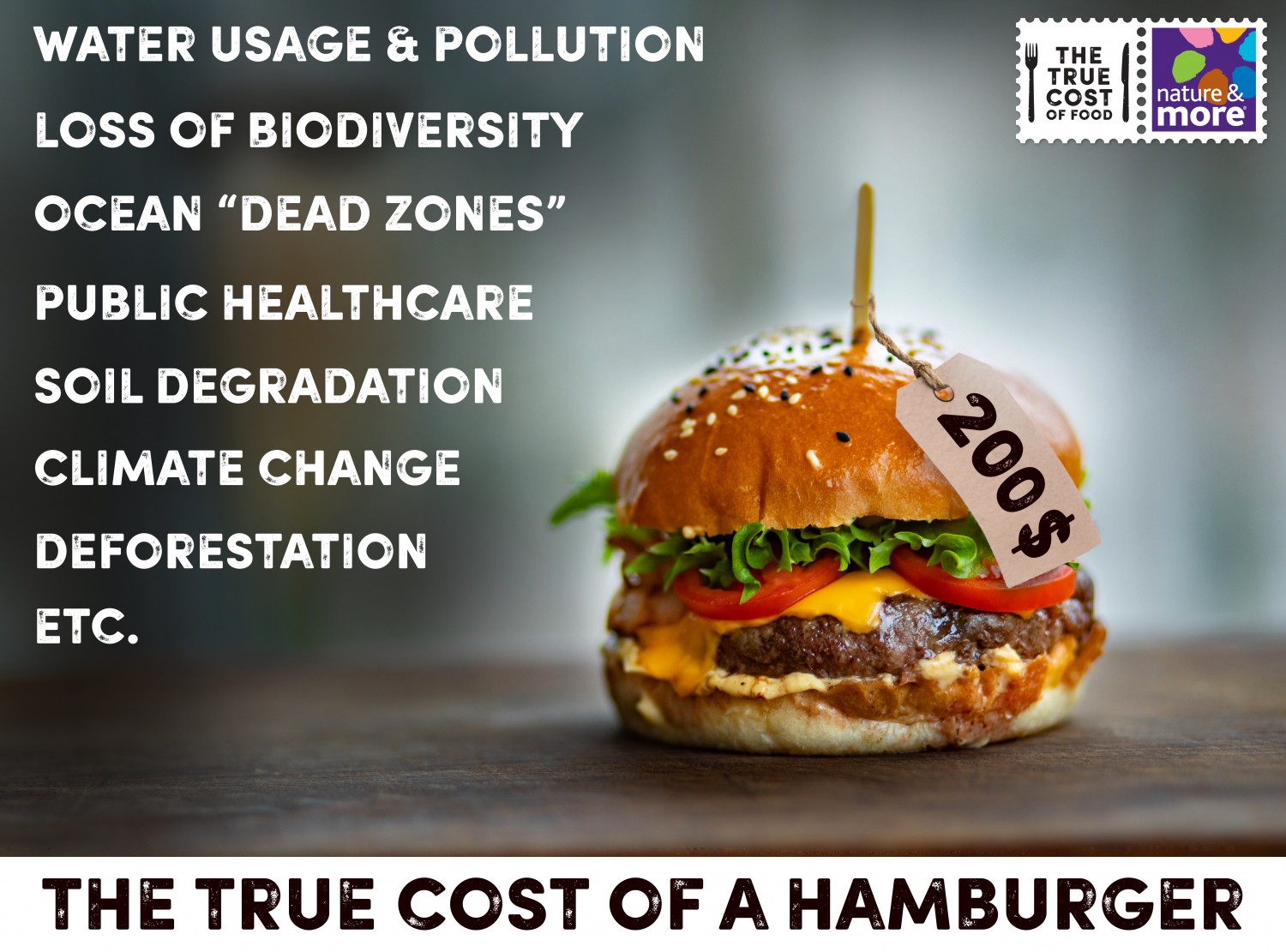
Hamburger, Carrots and Sticks!
Question… what is the cost of a hamburger? Go on take a guess... $1,80? No, a little more perhaps $2,20? No, wrong again, the true cost of a hamburger is around $200.
At least that is what the renowned Indian author and writer Raj Patel calculated when he started researching the true cost of one of the globes most popular snacks. See: http://bit.ly/Raj-Patel Or: http://bit.ly/true-cost-youtube
The true cost of a product not only includes the visible costs but also the hidden, external costs. In his book “The value of nothing: How to reshape market society and redefine democracy” he explains in depth how he came to his $200 price tag by including externalities such climate costs, biodiversity loss compensation, health care costs etc.
His study is perhaps a little outdated and if we were to recalculate the figures today they would be a little different. However, whether it is $150 or $250 we can certainly conclude that currently we are not paying the true cost for the burger. Nevertheless, what we too often forget is that sooner or later we have to pick up the price tag. We are either indirectly paying for it now, through taxes, health care costs and higher insurance policies or even worse we are presenting the bill to our children and grandchildren.
High time, therefore, to start calculating in an honest manner in choosing products with a much lower true cost. A few years ago, together with the experts at Soil & More Impacts, the Food and Agriculture Organisation of the United Nations and accountant EY, we started the True Cost of Food project. We wanted to find out what the true cost is of our organic fruits and vegetables and compare them with the conventional counterparts.
The conclusions of our pilot were twofold
- The preconception that organic products are too expensive is incorrect.
- Conventional products are far too cheap
It was not really surprising to learn that the hidden costs of conventional agriculture are much higher compared to organic. We all know about the detrimental effects that artificial fertilizers and chemicals have on the soil, water system, climate, biodiversity and health and now this negative impact was given a price tag.
Having calculated the true cost for ten different products the campaign is now focusing on convincing consumers to choose more sustainably farmed products. Furthermore, we are using our real life results to motivate regional, national and European authorities to introduce “carrot and stick” regulation. In other words, we hope the developments in true cost accounting will lead to governments rewarding sustainable behavior through subsidies (carrot) and penalize pollution through taxations (stick). For example, in Sweden and France, higher taxation on artificial fertilizers and herbicides have been introduced and we hope more governments will follow suit.
We know that unfortunately, only a small percentage of companies are intrinsically motivated to make our planet greener, cleaner and more social. It is therefore essential that governments establish new “rules of the game” and make sustainability financial. If you are doing a great job, if you are “part of the solution”, if you are future proof .. then perhaps you can be rewarded in some way. If however, you are not contributing and are part of the problem there is nothing wrong in asking you to pay your share of the costs of repairing the planet. Who knows, perhaps it will even motivate you to change your behavior.


